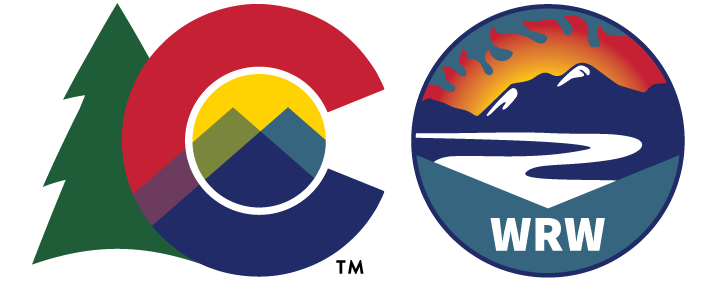
WILDFIRE READY WATERSHEDS
Working to understand the susceptibility of Colorado’s watersheds to post-wildfire impacts and to plan and prepare for them– before fires occur.
Turning Legislation into Action
The Colorado Water Conservation Board created the Wildfire Ready Watersheds Program to implement Senate Bill 21-240.
Signed by Governor Polis in June 2021, the SB 21-240 legislation directed CWCB to assess the susceptibility of Colorado’s water resources, communities, and critical infrastructure to post-wildfire impacts and advance a program to assist communities in planning and implementing mitigation strategies to minimize these impacts.
The CWCB is working with scientists, engineers, and local communities to identify our most vulnerable watersheds and to develop and implement strategies to lessen the long-term effects that wildfires have on our stream corridors, water infrastructure, and community assets.
Wildfire impacts don’t stop when the flames do.
The Wildfire Ready Watersheds Program provides guidance to help predict where and what post-fire impacts will be felt in local communities.
In addition to identifying what parts of the state and the state’s infrastructure are susceptible to post-fire hazards, the Wildfire Ready Watershed’s Program provides a detailed work plan that community groups can use to refine and add detail to the study in ways that reflect local priorities and values. Importantly, the Wildfire Ready Watersheds Program also provides guidance on actions that may be taken to reduce the impact of these post-fire hazards on infrastructure and natural resources – both before, and after, a wildfire occurs. The Wildfire Ready Watershed Program hopes to support pre-and post-wildfire planning and response efforts in your community.
Impacts to water supplies, infrastructure, and human life can linger for many years after the firefighting crews head home.
After a wildfire burns, erosion of soil and runoff of rainfall can increase dramatically—oftentimes by several orders of magnitude over pre-fire conditions. This results in hazards within and downstream of burned areas as a result of the excess water and sediment that moves down streams and valleys over the years following a fire. This causes extreme impacts to water quality, reduces the capacity of reservoirs, affects water delivery and transportation infrastructure such as culverts and bridges, degrades aquatic habitat, and increases the risk of flood hazards that threaten life and property.
Explore the Hazards + assets At Stake
Please note, this interactive map is best explored on desktop.
Understanding post-fire Risk
Risk is a combination of the hazard and its impact on community assets and values. In assessing a community’s susceptibility, it is important to consider both where hazards exist and where the critical community assets are located.
SUSCEPTIBILITY
Where values at risk are located
Where hazards exist
Understanding where hazards pose threats to values provides an overall understanding of susceptibility

Watch a video and learn about Wildfire Ready Watersheds.
Listen to Colorado Water Talk podcast where we discuss Wildfire Ready Watersheds.
Watch a replay of the Wildfire Ready Action Planning Virtual Workshop (May 2025)
Watch a presentation and learn about Wildfire Ready Watersheds.
Wildfire Ready Watersheds is focused on three primary efforts…

Have thoughts or input?
Contact us through the link below!






